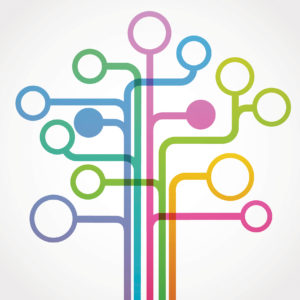
The world is not all in black and white, A or B, true or false. There are degrees of correctness somewhere in the middle (unless you’re talking about barcodes, of course).
Think about how we talk:
- Do you want to eat, yes or no? I’m a little hungry, but not starved.
- Do you believe me or not? I’m not entirely convinced.
- Is he a tall man? I guess he’s tall, but not that tall.
- What color is that? Kinda blue, kinda green.
The binary system of “0” and “1” required that language be converted to a pattern that used one or the other of the two numbers. Binary language looks for finites, but we integrate so many factors in our choices and needs that it becomes difficult (or cumbersome) to define and manage them.
Enter “fuzzy logic.”
Dr. Lofti Zadeh developed the theory of binary logic in the 1960s, when he was a professor at the University of California at Berkeley. Dr. Zadeh wanted to find a way for a computer to see a problem in the way a human would. He determined that the binary codes “0” and “1” represented extremes, but he could use fuzzy logic algorithms to identify those “in-between” areas. Mathematical sets addressed “if this, then do this.” For each step in the decision process, the sensor uses fuzzy logic to do the thinking.
Here’s some examples:
Air Conditioning.
Old air conditioners were set to a minimum and maximum room temperature. When that lower number was reached, the unit turned off. When the temperature hit the higher point, the air conditioner turned back on.
In today’s HVAC systems, fuzzy logic doesn’t rely on the two “extremes”. It manages the temperature to remain steady. By sensing slight fluctuations and making adjustments, the air conditioning system is more energy-efficient.
Cooking.
If you’ve ever struggled with getting rice cooked to the right texture and moisture, you might have purchased a rice cooker. This handy little appliance is an excellent example of the use of fuzzy technology for consumers. If the rice is cooking too fast, the fuzzy logic algorithm alerts the computer to turn down the heat. If it senses the moisture is not being absorbed at the right rate, the computer kicks up the heat. Every fluctuation in the cooking process triggers an “if”, and an algorithm answers with “then”.
Washing Machines.
Washing machines now use fuzzy logic. They can sense how heavy a load is and determine the correct amount of water and detergent, speed of agitation, and length of the wash cycles. There is no single standard for the dirty laundry. Fuzzy logic enables the machine’s computer to make “in between” decisions. At the beginning of the wash load, the water is clear. As it becomes dirtier, the machine’s computer senses the discoloration that doesn’t allow light to pass through as easily. The sensors use fuzzy logic to control settings so you get a clean load.
TVs.
Similarly, televisions control the screen’s brightness, automatically adjusting the picture when light is streaming in or the room is darkened.
Law Enforcement.
Law enforcement software leverages the power of fuzzy logic to narrow down possible suspects in a database.
Fuzzy logic reflects that there are degrees of truth, that precision comes from a series of decisions, and solutions require solid decision-making.
We started with barcodes, but we’ve grown and expanded over the past decades. We know that not everything is in black and white, as evidenced by our Solutions Team every day!
Where do you see fuzzy logic in real life? Share with us on Twitter @LTronCorp